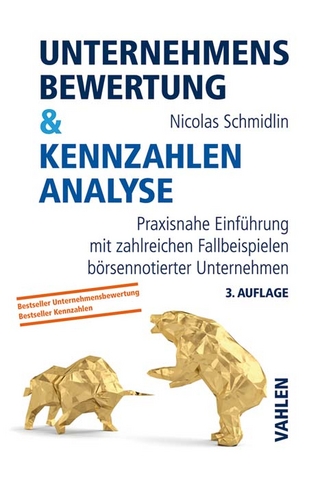
Business Analytics for Banking
Seiten
2016
Arcler Education Inc (Verlag)
978-1-68094-485-3 (ISBN)
Arcler Education Inc (Verlag)
978-1-68094-485-3 (ISBN)
Offers a thorough review of business analytics for banking. It covers topics such as a bank's customer analytics, fraud detection and analytics, risk analytics, and various banking business analytics case studies drawn from the experience in different countries.
Predictive analytics has become extremely important to all business domains, especially in the financial and the banking sector. Data analytics of financial data can provide analysis and understanding of what happened in the past, and, by taking advantage of the identified schemes and trends, it could predict the future as accurately as possible.In order to discover the set of critical success factors that will help banks reach their strategic goals, financial managers need to move beyond standard business reporting and sales forecasting. By applying data mining and predictive analytics to extract actionable intelligent insights and quantifiable predictions, banks can gain insights that encompass all types of customer behavior, including channel transactions, account opening and closing, default, fraud and customer churn. Financial analytics at the level of one economic entity (bank) deals with the preparation of financial statements to analyze the balance sheet and income statement, the compilation and analysis of the cash flow statement, and the understanding and analysis of the ratio numbers. Fraud analytics is a critical activity that aims to detect and uncover fraudulent activities coming from both employees and customers. Several tools that can be applied for fraud detection include statistical analyses, classification algorithms, duplicate and gap testing, and stratification of numbers. Customer analytics, on the other hand, involves improvement of customers’ satisfaction by offering best interest rates, annulation of fees, and free e-banking capabilities, with the aim to achieve a competitive advantage on the market. This edition is dedicated to business analytics for banking, and it covers topics such as bank’s customer analytics, fraud detection and analytics, risk analytics, and various banking business analytics case studies drawn from the experience in different countries. Section 1 focuses on financial analysis and predictions in the banking sector, describing how to predict bank interests when monetary rates are close to zero, a review on data mining in banking sector, pattern analysis on banking dataset, and usage of automated net asset value validation tool in an international investment bank. Section 2 focuses on customer and fraud analytics in banking, describing the influence of bank customers using social networks, intelligent detection of bad credit card accounts, identifying bank frauds using Crisp-DM and decision trees, using big data and cloud computing to detect black money rotation, and investigation of the reasons for bank frauds along with an implementation of preventive security controls in the Indian banking industry. Section 3 focuses on risk analytics in banking, describing the operational risk modelling in insurance and banking, effects of credit risk and funding on the pricing of uncollateralized derivative contracts, risk analysis technique on inconsistent big data sets, and the impact of asset price bubbles on credit risk measures. Section 4 consists of case studies from different world regions, describing Chinese commercial bank efficiency assessment with a parametric hyperbolic distance function, a Pakistani study about bank risk with key indicators and their impact on financial performance, evidence from using the VEC model on bank credit and economic growth in Nigeria, data envelopment analysis and application to a sample of Vietnamese agricultural bank branches, and empirical study on the relationship between bank liquidity creation and the capital in the Chinese banks.
Predictive analytics has become extremely important to all business domains, especially in the financial and the banking sector. Data analytics of financial data can provide analysis and understanding of what happened in the past, and, by taking advantage of the identified schemes and trends, it could predict the future as accurately as possible.In order to discover the set of critical success factors that will help banks reach their strategic goals, financial managers need to move beyond standard business reporting and sales forecasting. By applying data mining and predictive analytics to extract actionable intelligent insights and quantifiable predictions, banks can gain insights that encompass all types of customer behavior, including channel transactions, account opening and closing, default, fraud and customer churn. Financial analytics at the level of one economic entity (bank) deals with the preparation of financial statements to analyze the balance sheet and income statement, the compilation and analysis of the cash flow statement, and the understanding and analysis of the ratio numbers. Fraud analytics is a critical activity that aims to detect and uncover fraudulent activities coming from both employees and customers. Several tools that can be applied for fraud detection include statistical analyses, classification algorithms, duplicate and gap testing, and stratification of numbers. Customer analytics, on the other hand, involves improvement of customers’ satisfaction by offering best interest rates, annulation of fees, and free e-banking capabilities, with the aim to achieve a competitive advantage on the market. This edition is dedicated to business analytics for banking, and it covers topics such as bank’s customer analytics, fraud detection and analytics, risk analytics, and various banking business analytics case studies drawn from the experience in different countries. Section 1 focuses on financial analysis and predictions in the banking sector, describing how to predict bank interests when monetary rates are close to zero, a review on data mining in banking sector, pattern analysis on banking dataset, and usage of automated net asset value validation tool in an international investment bank. Section 2 focuses on customer and fraud analytics in banking, describing the influence of bank customers using social networks, intelligent detection of bad credit card accounts, identifying bank frauds using Crisp-DM and decision trees, using big data and cloud computing to detect black money rotation, and investigation of the reasons for bank frauds along with an implementation of preventive security controls in the Indian banking industry. Section 3 focuses on risk analytics in banking, describing the operational risk modelling in insurance and banking, effects of credit risk and funding on the pricing of uncollateralized derivative contracts, risk analysis technique on inconsistent big data sets, and the impact of asset price bubbles on credit risk measures. Section 4 consists of case studies from different world regions, describing Chinese commercial bank efficiency assessment with a parametric hyperbolic distance function, a Pakistani study about bank risk with key indicators and their impact on financial performance, evidence from using the VEC model on bank credit and economic growth in Nigeria, data envelopment analysis and application to a sample of Vietnamese agricultural bank branches, and empirical study on the relationship between bank liquidity creation and the capital in the Chinese banks.
Jovan Pehcevski obtained his PhD in Computer Science from RMIT University in Melbourne, Australia in 2007. His research interests include big data, business intelligence and predictive analytics, data and information science, information retrieval, XML, web services and service-oriented architectures, and relational and NoSQL database systems. He has published over 30 journal and conference papers and he also serves as a journal and conference reviewer. He is currently working as a Dean and Associate Professor at European University in Skopje, Macedonia.
| Erscheinungsdatum | 20.03.2018 |
|---|---|
| Sprache | englisch |
| Maße | 152 x 229 mm |
| Themenwelt | Wirtschaft ► Betriebswirtschaft / Management ► Finanzierung |
| Betriebswirtschaft / Management ► Spezielle Betriebswirtschaftslehre ► Bankbetriebslehre | |
| ISBN-10 | 1-68094-485-1 / 1680944851 |
| ISBN-13 | 978-1-68094-485-3 / 9781680944853 |
| Zustand | Neuware |
| Haben Sie eine Frage zum Produkt? |
Mehr entdecken
aus dem Bereich
aus dem Bereich
warum unser Geld stirbt und wie Sie davon profitieren
Buch | Hardcover (2024)
FinanzBuch (Verlag)
30,00 €
denken und handeln wie ein professioneller Trader
Buch | Softcover (2023)
Vahlen, Franz (Verlag)
36,90 €
Praxisnahe Einführung mit zahlreichen Fallbeispielen börsennotierter …
Buch | Softcover (2020)
Vahlen (Verlag)
24,90 €


